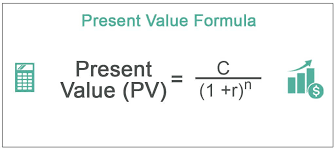Working capital is the money a company uses to maintain and execute its everyday operations. It enables businesses to make regular payments and guarantees efficient business operations. However, how do you handle it? An integral part of financial management in business is the efficient management of working capital. Working capital management enables businesses to balance their cash flows, accomplish short-term objectives, account for unforeseen expenses, and free up cash that is frequently trapped on the balance sheet. A business’s short-term objectives, budget, and commitments can be better met with the aid of effective working capital management. You will get to learn how the working capital management strategy works, as well as the types and examples, as you read on.
What is Working Capital Management?
Working capital management is a business strategy that aims to make sure a firm runs smoothly by keeping track of and making the most use of its current assets and liabilities.
Working capital management aids organizations in making efficient use of their existing assets and maximizing cash flow. Its primary focus is on helping the company meet its immediate financial commitments and expenses while simultaneously making progress toward its long-term goals. It comes with the purpose of getting everything running as smoothly as possible.
Companies can free up cash that might otherwise be locked on their balance sheets by optimizing how they handle working capital. As a result, companies might be able to lessen the requirement for outside borrowing, promote growth, finance mergers and acquisitions, or make R&D investments.
How Does Working Capital Management Work?
Working capital management involves controlling the cash conversion cycle (CCC), which starts with inventory purchases and ends with the collection of accounts receivable and timely payment of accrued liabilities such as employee payroll, vendor accounts payable, and short-term debt obligations.
Managing a company’s working capital ensures that it has enough cash on hand to cover its immediate expenses and debt payments. Working capital is basically the difference between a company’s current assets and current liabilities.
- Current Assets: This categorically includes anything that can be quickly converted into cash within a year. These are the very liquid assets of the business. Cash, accounts receivable, inventories, and short-term investments are a few examples of current assets.
- Current Liabilities: These are the commitments that fall due in the upcoming year. These consist of the present portion of long-term debt payments as well as accruals for operating expenses.
In order to effectively manage working capital, businesses must perform tasks such as analyzing trends through the computation and tracking of ratios and metrics, forecasting working capital balances by balance sheet category, evaluating aging reports for accounts receivable and payable, managing inventories, handling cash flow, reducing short-term accrued liabilities, and controlling spending.
The management of working capital entails settling on a course of action for each lever that affects working capital and then carrying it out.
Components of Working Capital Management
When planning how to spend your money, some balance sheet accounts are more crucial than others. When calculating working capital, it is common practice to compare all current assets to all current liabilities. However, there are a few accounts that are especially important to monitor.
#1. Cash
Keeping tabs on cash flow and predicting future cash demands is generally crucial to managing working capital. To achieve this goal, management must take charge of the company’s cash flow by planning for the future, keeping tabs on current cash levels, and maximizing cash inflows and outflows. Cash is different from other accounts since it is always a current asset. However, businesses must be wary of deposits that have time limits or other restrictions.
#2. Payables
Companies can take advantage of accounts payable because it is one area of working capital management over which they often have more say. While a firm may have little control over some elements of working capital management (such as the sales of goods or the collection of receivables), it does have some say in how it pays its suppliers, the credit terms it extends to them, and the timing of its cash outlays.
#3. Receivables
Keeping track of cash inflows is also essential for effective capital management. This is crucial in the short term while they await the completion of credit sales. Improving collection procedures, keeping tabs on client payments, and maintaining the company’s credit policies all fall under this umbrella. In the end, it doesn’t matter if a sale was made if the company can’t get paid for it.
#4. Inventory
Companies give inventory the most attention during working capital management since it is among the riskiest. In order to turn stock into revenue, businesses must cater to customer tastes when selling goods on the market. If this is not done quickly, the company risks being in an illiquid situation with its short-term resources. It’s also possible that the corporation can move the stock quickly, but only by drastically lowering the price.
Why Is Working Capital Management Important?
Working capital management is crucial for businesses of all sizes; it’s a strategy for ensuring that a business has enough cash on hand to pay its regular expenses, debts, unforeseen charges, and essential supplies. Additionally, it aids a business in cutting costs and increasing returns on investments. A business can raise its earnings and profits by effectively managing its working capital.
Key performance ratios that monitor a company’s current capital, inventory, and cash flow can be used to manage working capital. This makes it easier to spot problems that the business should fix to keep itself profitable.
Companies that manage their working capital well can prevent financial issues, boost profitability, and increase stock value while also staying ahead of the competition.
Working Capital Management Strategy
Generally, there are a number of solutions or strategies a business can employ for managing its working capital and that of its suppliers. Among these are:
#1. Inventory Management
By cutting down on lead times, guaranteeing access to safety stock, and making the inventory process more visible in general, well-implemented inventory management solutions can enhance your balance sheet position or working capital situation.
#2. Electronic Invoicing
Using electronic invoice submission can boost a company’s working capital. For instance, you may decrease the possibility of errors, automate laborious procedures, and ensure that your clients receive your bills as quickly as possible by optimizing the invoicing process. This may eventually result in you getting paid sooner. Companies can send large numbers of invoices using system-to-system connections. They may also convert purchase orders into invoices automatically using electronic invoice submission methods.
#3. Future Cash Flow Forecasting
Businesses may prepare for potential cash shortages and make better use of cash surpluses if they have an accurate picture of future cash flows, including payables and receivables. Decisions about your working capital should basically be based on as realistic a picture as possible of your future cash flows.
#4. Modular Financial Support
Adapting to fluctuating working capital demands while continuing to assist suppliers is possible with the help of working capital providers that offer flexible lending, such as supply chain finance and dynamic discounting models.
#5. Supply Chain Funding
By partnering with one or more third-party financiers, buyers can extend early payments to their suppliers. This can come into play through a process known as supply chain finance, or reverse factoring. When buyers pay suppliers in accordance with the terms agreed upon, both parties benefit from reduced days sales outstanding (DSO) and lower funding costs.
#6. Dynamic Discounting
Another option for purchasers is dynamic discounting. This is a situation whereby the program is self-funded by the buyer through early payment reductions instead of an external backer. Similar to supply chain financing, this helps vendors lower their days of sales outstanding. And as such, buyers can earn a healthy return on their savings without taking any unnecessary risks.
What are the 7 Types of Working Capital?
Working capital is the difference between current assets and current liabilities in its most basic form. However, to the best of a company’s ability, there are numerous different sorts of working capital, each of which may be significant to its short-term requirements.
- Net Working Capital
- Permanent Working Capital
- Gross Working Capital
- Fluctuating Working Capital
- Regular Working Capital
- Reserve Working Capital
- Special working capital
Working Capital Management Ratios
The three most popular and important analysis tools for working capital management are the;
- Current ratio,
- Collection ratio and
- Inventory turnover ratio.
In order to help you better grasp each ratio, the explanations are below:
#1. Current Ratio
The current ratio is a measure of a company’s financial stability and capacity to pay short-term debts. By dividing current assets by current liabilities, a business can get its current ratio.
A current ratio below 1.0 typically indicates that a corporation may not have enough liquid assets to cover its prospective commitments. This, thereby making it challenging to meet those obligations. A current ratio between 1.2 and 2.0 is preferable, whereas one over 2.0 may indicate ineffective working capital management on the part of the company.
For instance, if an organization’s current assets are worth $20,000 and its current liabilities are worth $12,000, its current ratio is calculated as $20,000 / $12,000 = 1.667. The company may decide to keep the current ratio at this level since it is within the ideal range.
#2. Collection Ratio
The collection ratio demonstrates how successfully a business collects money after a credit transaction. It might also demonstrate how effectively the business is handling its receivables.
By multiplying the average amount of accounts receivable by the number of days in an accounting period and dividing the result by the total amount of net credit sales for the accounting period, a business can determine its collection ratio.
The collection ratio tells you how long it typically takes for a business to get paid after a credit sale transaction. A company’s cash flow is generally more effective if its collection ratio is lower.
#3. Inventory Turnover Ratio
The inventory turnover ratio of a company can tell you how quickly its inventory depletes and replenishes. It’s critical for businesses to maintain a good balance between having enough inventory to meet demand without going overboard in order to function as efficiently as possible. The inventory turnover ratio can assist a business in preventing capital from being trapped in inventory that isn’t being sold, which may result in cash flow issues.
By dividing the average balance sheet inventory by the cost of goods, a business can get its inventory turnover ratio. While low ratios could indicate that a company has too much inventory, a high ratio could indicate insufficient inventory levels.
What Is a Working Capital Management Example?
- Calculating the accounts receivable turnover ratio and then calculating the day’s sales in receivables are two examples of working capital management.
- Analyzing the shift in the working capital ratio from one year to the next is another illustration.
What Are the Basic Problems With Working Capital?
Some of the major challenges to working capital are;
- There is a lack of monetary awareness across departments and regions.
- Poor sales performance
- High rates of bad debt write-offs and delinquent receivables.
- Poor sales performance
- Inadequate management of the terms of payment for customers and suppliers.
- Poor quality of products
What Are the Requirements of Working Capital?
The difference between a company’s current assets and current liabilities represents the working capital requirement. In other words, it is the quantity needed to maintain the efficiency of corporate operations.
Bottom Line
Every company needs working capital to function, and increasing your working capital position can increase your company’s operational effectiveness. However, managing working capital efficiently involves striking a balance.
Companies must have sufficient cash on hand to pay both anticipated and unforeseen expenses while also making the best possible use of the funding available to support growth. Careful management of cash, checks, inventory, and accounts payable and receivable is necessary to achieve this.
- NETWORKING CAPITAL: How NWC Is Calculated
- WORKING CAPITAL: Definition & Tips For Effective Management
- Is Working Capital Financing the Right Choice for Your Business?
- HOW TO CALCULATE NET WORKING CAPITAL: Definition, Calculation & Formula
- DATA MINIMIZATION: Definition, Importance & How to Apply It






